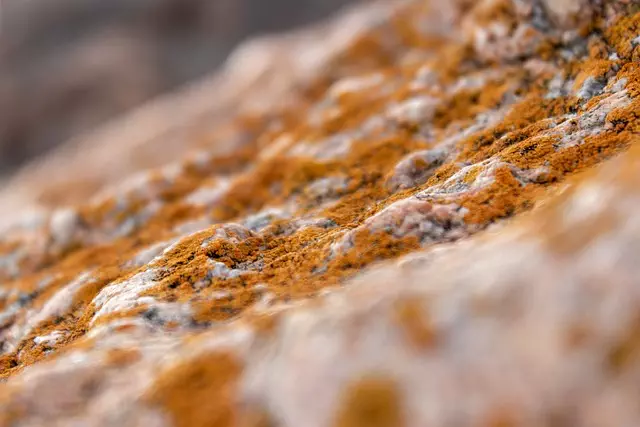Grout sealing is essential for maintaining tile and grout systems in high-moisture areas like bathrooms and kitchens, protecting against water penetration, mold, bacteria, and stains. Regular sealing (every 12-24 months) extends grout life, simplifies cleaning, and prevents harmful microorganisms. Choosing the right sealer for ceramic/porcelain or natural stone tiles is key. Thorough cleaning before sealing, using proper tools and solutions, and periodic inspection ensure effective protection. Preventing water damage, mold, and stains increases home value and makes cleaning easier. Correct preparation and adherence to instructions avoid installation mistakes that lead to long-term issues.
Tile and grout protection is an essential aspect of maintaining a beautiful and functional home. This article delves into the intricacies of grout sealing, a powerful tool in safeguarding your tile surfaces from mold, stains, and premature aging. By understanding the interactions between tiles and grout, we’ll explore why sealing is crucial for longevity. We’ll guide you through choosing the right sealer, application techniques, and maintenance tips to keep your grout looking new. Discover how this simple step enhances aesthetics and adds value to your property, while also avoiding common mistakes in installation and care.
Understanding Grout and Tile Surface Interactions

Understanding the interaction between grout and tile surfaces is crucial in maintaining a pristine and healthy home environment. Grout, the material that fills the spaces between tiles, plays a significant role in both aesthetic appeal and structural integrity. However, it’s also a breeding ground for mold and bacteria due to its porous nature, and can easily absorb stains from everyday substances like coffee, wine, or grease. To combat these issues, grout sealing is an essential step in tile protection.
Applying grout sealing products creates a protective barrier that prevents mold and bacteria from colonizing the tiny crevices, while also repelling water-based stains. This simple yet effective process ensures your tiles maintain their beauty and longevity, keeping your spaces clean and hygienic.
The Importance of Grout Sealing for Longevity

Grout sealing is an essential step in maintaining tile and grout systems, especially in high-moisture areas like bathrooms and kitchens. Not only does it protect against water penetration, but it also prevents mold and stains from forming within the grout lines. Over time, grout can absorb moisture, leading to the growth of mold, bacteria, and algae, which not only compromises the hygiene of your space but also deteriorates the overall appearance of your tiled surfaces. By sealing the grout, you create a protective barrier that repels water and stains, ensuring your tiles remain vibrant and in top condition for years to come.
This simple yet effective process involves applying a special sealer to the grout, which fills in the pores and prevents contaminants from settling. A good grout sealer will bond with the grout, forming a durable, water-repellent coating that repels dirt, grease, and other substances. This is particularly crucial in areas where stains are likely to occur, as it acts as a barrier, making cleaning easier and reducing the need for harsh chemicals. Regular sealing (typically every 12-24 months) can significantly extend the life of your grout, ensuring your tiled surfaces remain as good as new.
Common Causes of Mold and Stain Formation on Tiles

Mold and stain formation on tiles is a common concern in many homes, often leading to unsightly appearances and even health issues. The primary causes include high humidity levels, water leaks or overflows, and inadequate grout sealing. Grout, being porous, can absorb moisture, creating an ideal environment for mold growth if not properly maintained. Additionally, spills and stains from everyday activities, such as tracking in dirt or dropping food, can further exacerbate the problem.
Grout sealing is a proactive measure to prevent these issues. Sealing the grout not only protects it from absorbing excess water but also acts as a barrier against dirt and stains. This simple step can significantly extend the lifespan of your tiles and grout, ensuring they remain clean and free from mold buildup.
How Grout Sealing Acts as a Protective Barrier

Grout sealing is an essential step in tile and grout protection, serving as a robust barrier against various environmental factors. When applied correctly, grout sealer creates a protective layer that prevents water, stains, and mold from penetrating the grout lines. This is particularly crucial in high-moisture areas like bathrooms and kitchens where tiles meet, creating a seamy surface for bacteria and mold to thrive.
By sealing the grout, you create an impenetrable shield that keeps out dirt, oil, and other contaminants that can cause staining and discoloration over time. This simple yet effective method not only enhances the aesthetics of your tiled surfaces but also ensures their longevity by protecting them from damage caused by moisture intrusion and microbial growth.
Choosing the Right Sealer for Different Tile Types

When it comes to tile and grout protection, selecting the appropriate sealer is a crucial step for maintaining the aesthetics and longevity of your tiles. Different tile types, whether ceramic, porcelain, or natural stone, have distinct characteristics that require tailored sealing solutions. For example, ceramic and porcelain tiles, known for their porosity, benefit from water-repellent sealers that can prevent moisture penetration and subsequent mold growth. These sealers create a protective barrier on the tile surface, making them ideal for high-humidity areas like bathrooms and kitchens.
Natural stone tiles, such as marble or granite, demand a different approach due to their unique properties. Sealers designed for natural stone often focus on enhancing the tile’s natural beauty while providing stain resistance. Given the inherent variations in stone composition, it’s essential to choose a sealer that fills pores and fissures without compromising the breathability of the material, thus preventing both mold and stains—a primary concern when grout sealing to prevent mold and stains.
Application Techniques for Optimal Results

When it comes to tile and grout protection, proper application techniques are key to achieving optimal results. Starting with thorough cleaning to remove any existing dirt or debris is essential. This step ensures that your grout sealing process is effective and long-lasting. Using the right tools, such as a stiff brush or sponge, and specialized cleaning solutions designed for grout can make a significant difference in preparing the surface.
After cleaning, applying a high-quality grout sealer is crucial, especially to prevent mold and stains. Look for sealers that are specifically formulated for grout and offer long-lasting protection against water, dirt, and stains. Following the manufacturer’s instructions for application, ensuring even coverage, and allowing adequate drying time will guarantee maximum effectiveness. This simple yet effective step can transform your tiled spaces, making them easier to maintain and enhancing their aesthetic appeal.
Maintenance Tips to Keep Your Grout Looking New

Regular maintenance is key to keeping your grout lines looking fresh and new. One of the best ways to protect your grout is by sealing it, which acts as a barrier against moisture and stains. Grout sealing products are designed to fill in the pores of the grout, preventing mold, mildew, and other unwanted substances from taking hold. Regular cleaning with mild detergent and warm water also helps maintain the grout’s appearance.
In addition to sealing and cleaning, it’s important to inspect your grout lines periodically for any signs of damage or discoloration. Addressing issues early can prevent them from becoming more severe. Consider using a grout brush to reach tight spaces and remove any built-up dirt or debris. By incorporating these simple maintenance tips into your routine, you’ll ensure that your grout stays protected, looking new, and enhancing the overall aesthetic of your tiled surfaces for years to come.
Benefits Beyond Prevention: Enhanced Aesthetics and Value

Protecting your tiles and grout isn’t just about preventing water damage or unsightly stains; it’s also about enhancing your home’s aesthetics and increasing its value. Proper tile and grout maintenance can transform your space, making it more inviting and elegant. Well-maintained tiles and grout contribute to a fresh, clean look that is essential for creating a positive first impression on visitors and potential homebuyers.
Grout sealing, in particular, offers significant advantages beyond prevention. By sealing the grout, you create a protective barrier against mold, mildew, and stains caused by bacteria, dirt, and other contaminants. This not only ensures longer-lasting cleanliness but also adds to the overall appeal of your tiled areas. A sealed grout line allows for easier cleaning and maintenance, making your space more manageable and ensuring it remains a highlight in your home.
Common Mistakes to Avoid During Installation and Care

During tile and grout installation, common mistakes can lead to long-term issues, especially when it comes to care. One of the most significant blunders is neglecting grout sealing, which acts as a protective barrier against mold and stains. Unsealed grout becomes a breeding ground for mold and algae, leading to unsightly discoloration and health risks. Regular cleaning might temporarily mask these problems but won’t prevent them from recurring.
Another mistake to avoid is using incompatible materials or tools, which can damage the tile surface or leave behind residue. Using the wrong adhesive for your specific tile type or not allowing sufficient drying time between coats of grout sealer are also common pitfalls. Proper preparation and adherence to manufacturer instructions are key to avoiding these issues and ensuring a durable, low-maintenance tile and grout finish.
